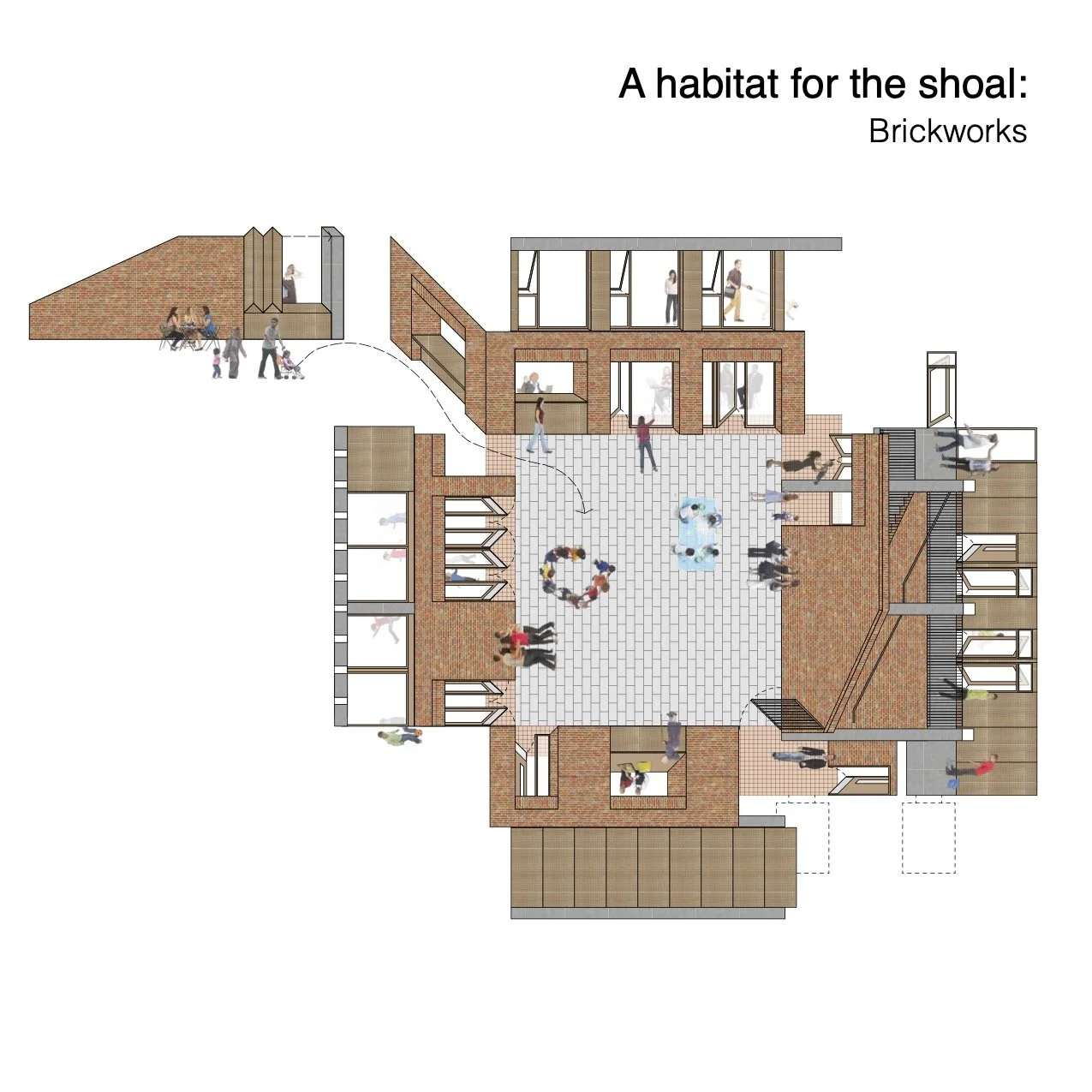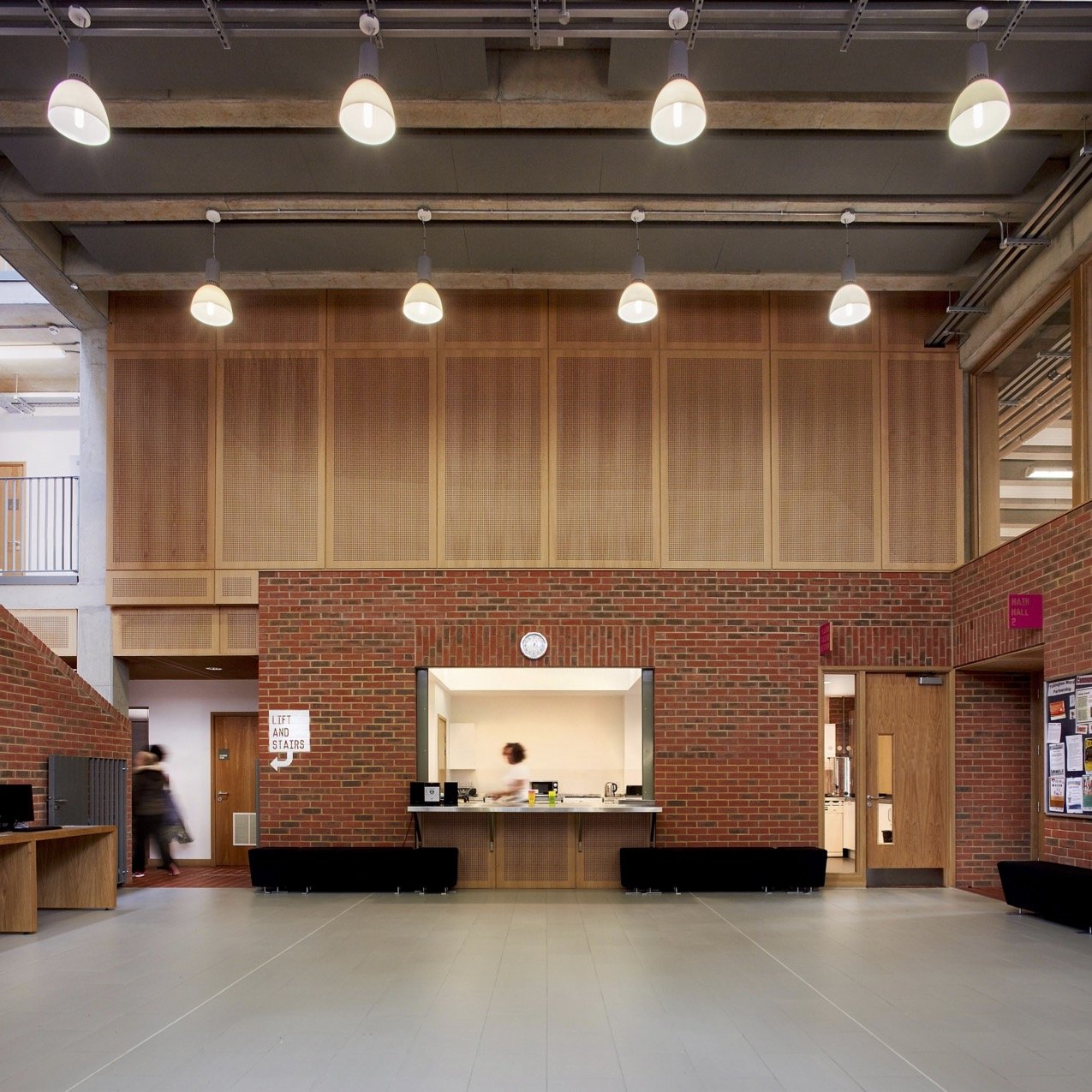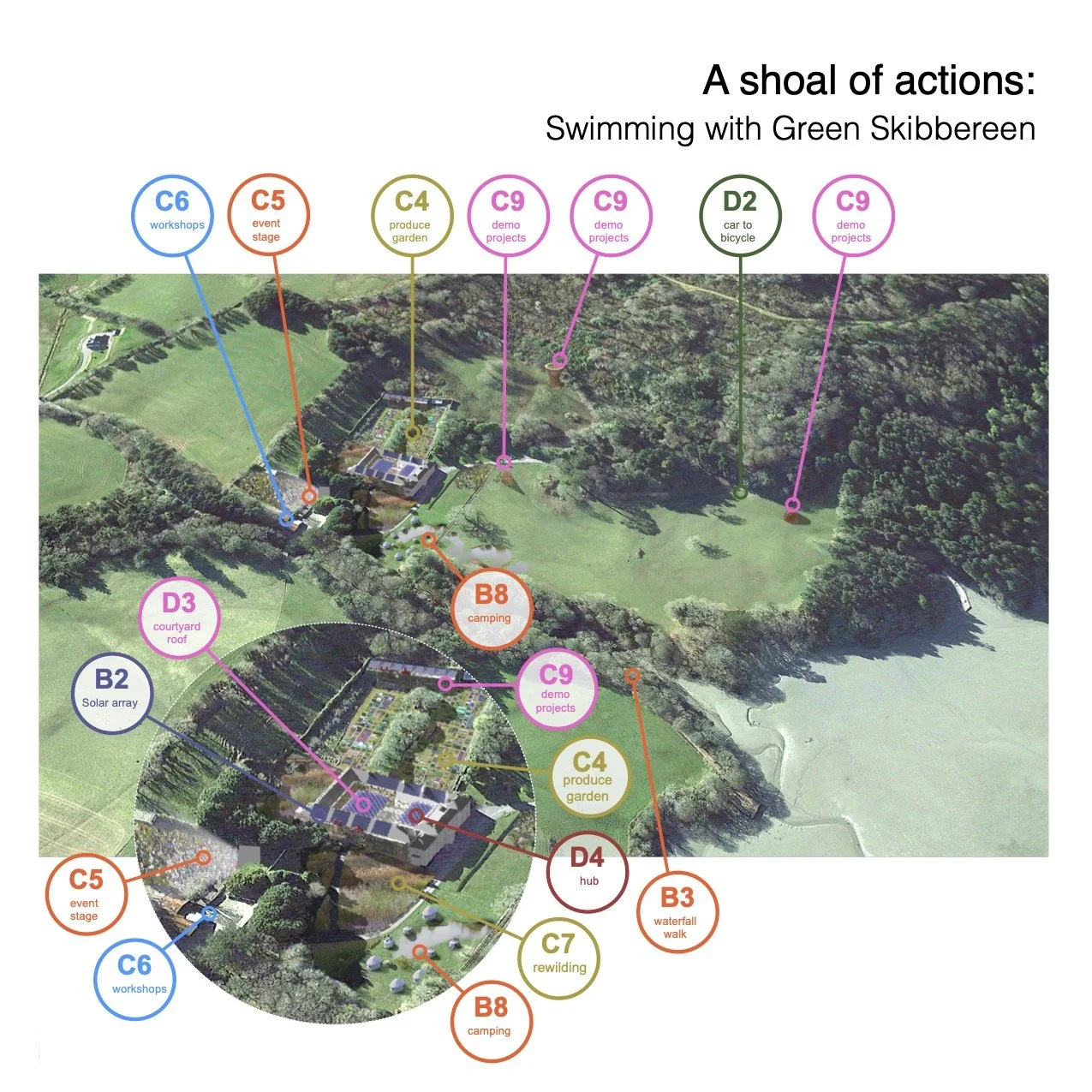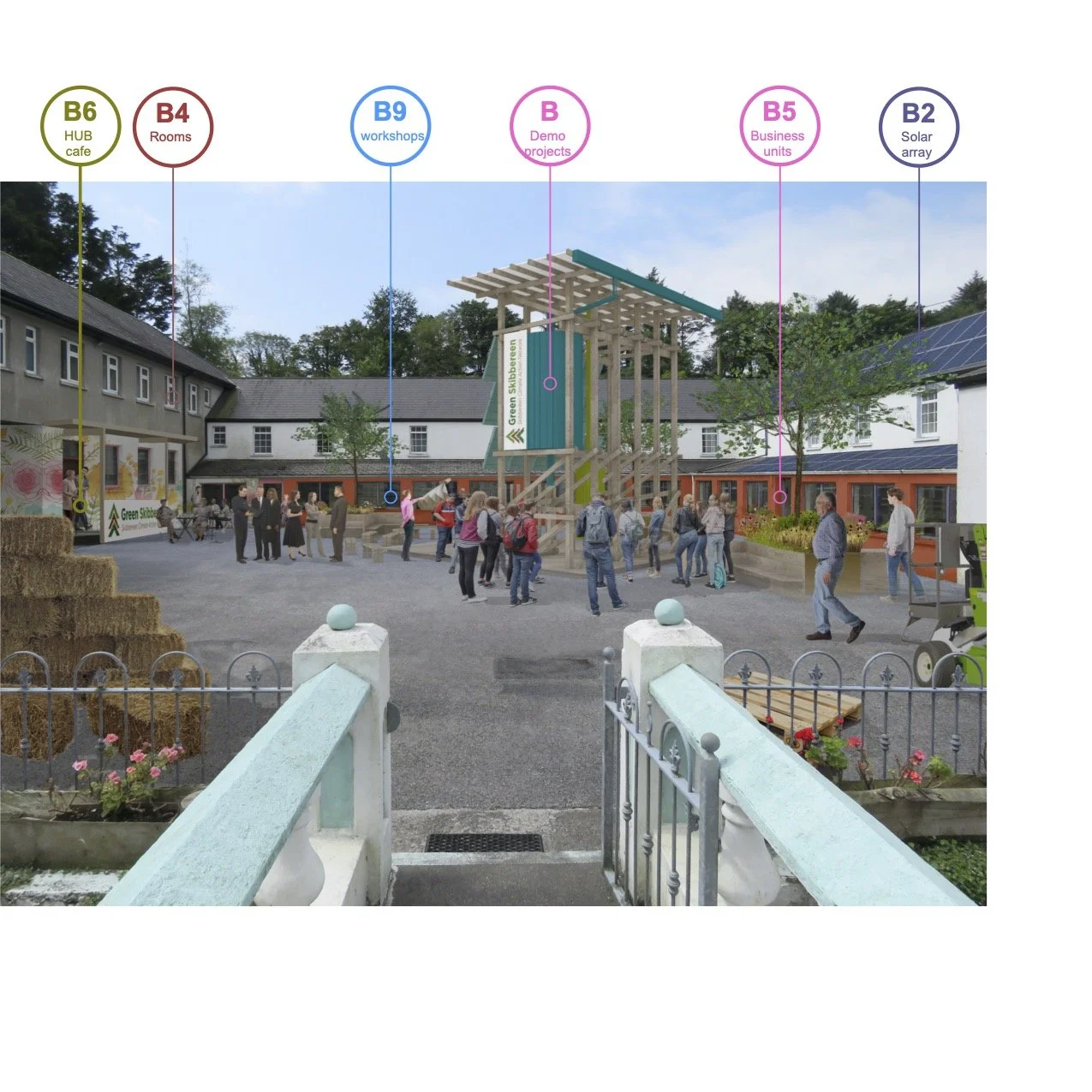Z4 — Swimming with the shoal
Working with people and processes, fixed objects and fluid action plans
Drawing on two recent projects undertaken by Brady Mallalieu Architects, Andrew Carr reflects on collaborative design processes and a shift beyond the design of finished objects to architects as instigators of patterns of ongoing actions and processes.
One fish starts swimming with another and together they form a shoal. As others join them they swim together for a time. Never a fixed group, others come and go, perhaps splitting off, going it alone or recombining into new shoals. Unlike a school, a shoal of fish might contain members of different sizes and species. Each member adjusts their behaviour to remain close to the other fish in the group. Together they have a strength that they would not have as individuals, borrowing the slipstream of other fish to save energy and confound predators.
Inevitably our work as architects involves working with others and the image of the shoal recalls the act of swimming with others, whoever they might be, perhaps clients, community groups, individuals, builders or consultants. As Brady Mallalieu Architects we have worked with many people over the years, tailoring projects to closely meet their needs. The result of this process is generally a building, a physical entity that, we hope, will serve the people we have worked with as we move on to other shoals and projects, to different conversations with other fish.
More recently, we have begun to understand the shoal in another way. Rather than swimming amongst the shoal to help tailor a building, we instead swim with others to establish a shoal of activities and processes. Collectively they form the larger project, evolving in time as new opportunities emerge and others dissolve, new individuals and groups enter the frame and others leave. This loose, fluid collective is a shoal of both people and actions.
We discuss both of these approaches below, drawing upon our experience of two recent projects: In London, at Brickworks, swimming with the shoal allowed us to design a space for it, a tailored habitat for the shoal to thrive within. With Green Skibbereen in West Cork, Ireland, we proposed a fluid set of actions which contribute to the ongoing life of the shoal itself.
A habitat for the shoal – Brickworks
For Brickworks our shoal was gathered by Islington Council, the client for the project, and included eight different community groups and building users, together with locals from the housing estate where the site was located. We designed a new community centre with them through a series of design workshops. It is arranged over three floors around a central ‘inhabited lobby’. This double height space provides a social focus for the building, hosts events and activities in its own right whilst giving access to the other more programmed spaces in the building which include; a large hall, community kitchen, children’s drop-in centre, therapy rooms, roof garden, meeting room, music recording space and offices serving charities and community groups. Whilst each of these spaces is provided to address specific, known needs we were careful to imbue the building with the potential to accommodate both these predicted uses and prompt unexpected events, exchanges and activity.
‘It is a place to gather, a living, civic, community space with a roof. Under this roof the activities of the centre are visible and accessible to all’
The central ‘inhabited lobby’ is key to this.1 It creates a loose, unprogrammed space surrounded by landings, openings, thresholds and doorways to adjoining spaces. People have to pass through the space to get to another, it is a place where you meet someone or catch a glimpse of something going on elsewhere. It is a place to gather, a living, civic, community space with a roof. Under this roof the activities of the centre are visible and accessible to all: Children from the estate can hang out there and get help with their homework, elders gather in a drop-in cafe, basic cooking skills are taught in a teaching kitchen, children and parents can access the help of two charities, a church can meet and the life of a myriad of groups, activities and support services have a home. Brickworks was grown and tailored in response to the needs of the local community it serves.
We hope that the habitat we have created for the shoal which inhabit the community centre will allow it to swim there happily for some time to come. The interior spaces are designed to be robust and flexible allowing different groups to adapt and inhabit the space over time.
A shoal of actions - swimming with Green Skibbereen
During the spring lockdown of 2020 we were appointed by Green Skibbereen to work with them to consider how they might occupy Myross Wood House, near Leap, in West Cork, Ireland as a centre for community action on climate change. They are a recently formed group of individuals committed to grass roots activities that help the local community, businesses and organisations shift to low and zero carbon footprints. To help achieve these aims they are in the process of inhabiting a former Catholic retreat centre which will become a base for educational events, exhibitions, training and a broader range of activities relating to wellness and the environment. The process of re-inhabiting the building will become a demonstrative and hands-on pedagogical process as it is gradually re-used, retrofitted and upgraded.
We worked with them to develop the scope and nature of these activities and explore both how they might occupy the building and the opportunities the building presents to them. The result of this process was not a fixed masterplan or final layout for the building but a collection of actions which might be carried out over the short, medium and long term. We envisage these actions changing through the life of the group and their residency at Myross. New actions might be added as other opportunities are identified or grant funding obtained, whilst others might prove unviable to remain unimplemented. Action by action Myross Wood House will evolve into the centre for community action they envisage.
‘a collection of actions which might be carried out
over the short, medium and long term’
Startup actions simply occupy the spaces that were there as a base for the group and take over some of the existing dormitory bedrooms as accommodation for tourists and students. In the short and medium business units and workshops are established, parts of the building are upgraded to improve energy efficiency, renewables installed and the wider estate brought back into productive use. Longer term, once confidence and viability have been established, more significant interventions are made in the building. Collectively we identified twenty nine independent actions that the group might focus on. Some will happen, some will remain dormant, some will suggest others. The project, assuming it could be described as such, is ongoing and perpetually incomplete.
The shoal of actions were identified by working with Green Skibbereen, itself a shoal of individuals, alongside our fellow design team members and by exploring the building and estate. Working under the restrictions imposed by the covid pandemic we were limited in the way we could engage more with the local community. Happily this is now getting easier and we can draw them more closely into the shoal.
Fixed objects and continuous processes
The definition of a project as a series of processes rather than as a fixed object is nothing new. German architect Gottfried Semper published The Four Elements of Architecture in 1851. Significantly this interpreted buildings as the assembly of a series of craft and construction activities relating to the hearth (metalwork/ceramics), roof (carpentry), enclosure (weaving) and mound (masonry/earthwork). We tend to think of buildings as being ‘completed’ once these processes have ended and the ‘finished’ building is inhabited. Even then occupation, gravity and the weather continue to mould the building.
In Building in Time Marvin Trachtenberg contrasts this idea of the building as a fixed object, which he associates with one of the architects of the Italian Renaissance, Leon Battista Alberti, with the ongoing processes of construction in the pre-renaissance era. Here important large buildings were constructed over decades or even centuries, the processes outlasting the lifespan of its participants. This leads to a very different way of understanding a building as a collaborative process over a prolonged duration, as an unfinished entity which others will add to in the future. This sense of continuous evolution over a long duration is not dissimilar from the way a village, town or city might evolve.
Something of this outlook is present in our experience of swimming with Green Skibbereen. Working with them we have identified a shoal of actions which will be nurtured to life. The pattern of actions is open to change. We hope others will add to it and swim amongst it. What the actions will grow into, and where they will end up, will help form the next chapter in the ongoing life of Myross Wood House. We are not seeking a final form for the building, to make the fish of the shoal assume a certain formation, limit how they might swim or who might swim alongside them. Instead we hope, alongside others, to instigate actions that will help the shoal thrive.
Recent research suggests that shoal positions are rotated by individual fish according to their nutritional needs. Shoal members effectively take turns at being leaders, occupying the front position to satisfy their hunger before dropping back within the group. As we continue to swim with Green Skibbereen our role as architects becomes less about authorship and control, however benevolent in intent. Even the terms co-design and co-designer don’t really seem to describe our presence as intermittent leaders and followers, listeners and observers, researchers and dreamers; initiators, instigators, provokers and agitators of actions in an ongoing collective process.




